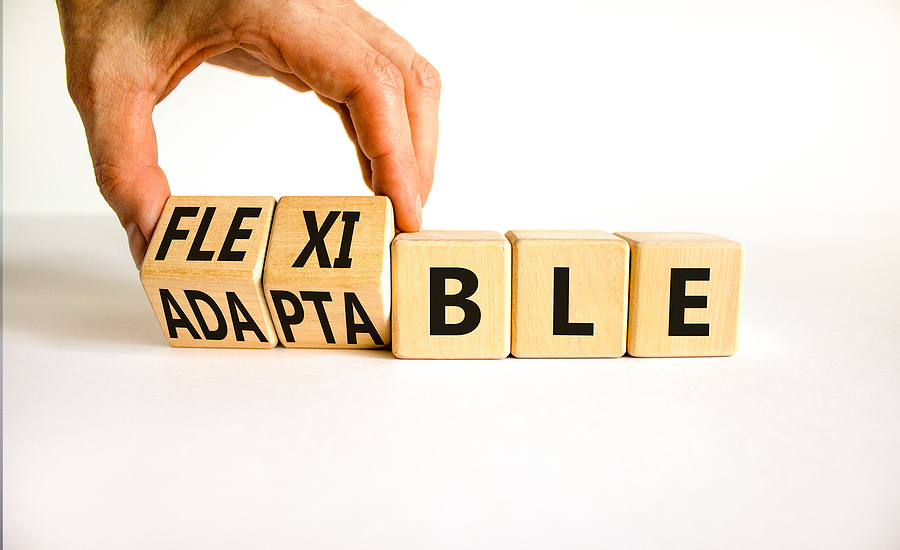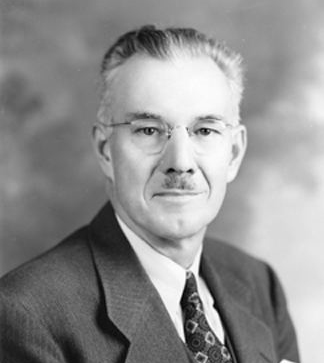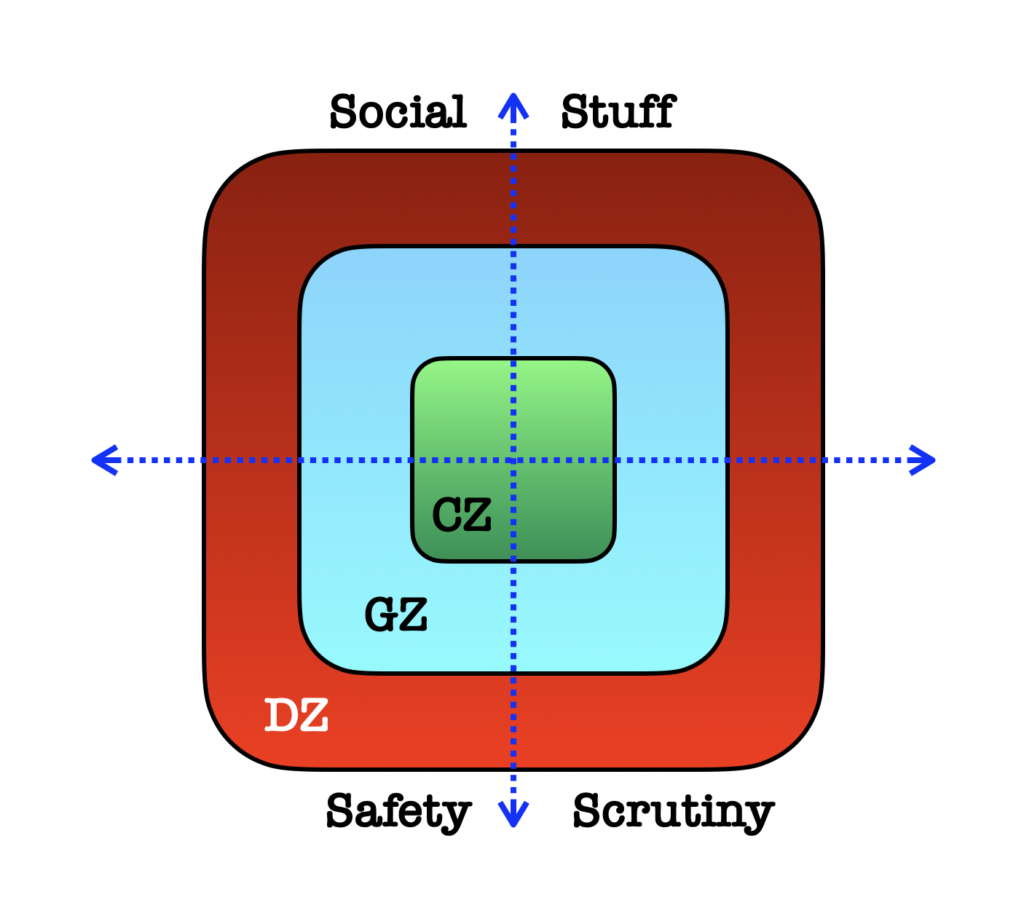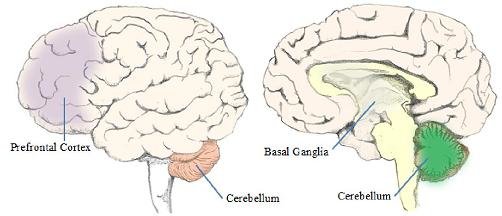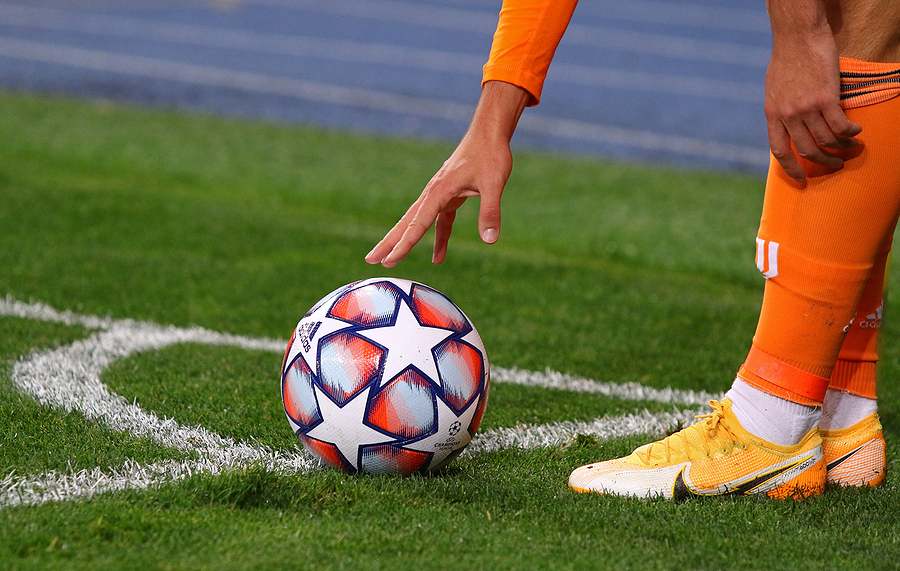
Back From The Future
Ok, readers, I borrowed a time machine and just returned from the year 2050. And you will not believe what I saw. Doncaster Rovers F.C. won the English Premier League yet gain. And sport psychology is nothing like it is in 2024. It’s mainstream, normal, and regarded as the most important part of competitive sports.

Forecasting the future is one of the most remarkable aspects of being human. No other species can do it quite like we can. But it’s both a blessing and a curse. The upside is our ability to plan and do things three moves ahead of our opponents. The downside is wasting mental energy, such as “I just know I am going to play poorly tomorrow”.
Sport Psychology In 2050?
During several interviews between UK sport psychologist Dan Abrahams and his guests on the highly recommended The Sport Psych Show, he asked them to imagine using a time machine to go back in time. I thought it might be fun and thought-provoking to use it to go into the future instead!
In this article, I will predict what the sport psychology landscape will look like 25 years from now. Like Robert Zemeckis and Bob Gale (creators of the Back To The Future Trilogy), I will make some educated guesses. Feel free to save a copy and then get in touch in 2050. This might be hard as I plan to be fully retired by then.
Let me know how accurate or inaccurate they turn out to be. I will not, in this article, focus on the problematic aspects of future-based thinking. But I will say this. We now know that one of the key aspects of sporting mental toughness is being able to focus at will on the present moment. In other words, there are many occasions in a competitive sporting situation in which we literally want to ‘turn off’ our ability to think about the future. More on this will be discussed in another article (which, when written, I will link here).
3 Majors Changes To Sport Psychology Are Coming
I hypothesise three major changes in the coming decades to dramatically change what sport psychology looks like. My predication is that the following will occur or have happened by the middle of this century.
- The phasing out of generic (non-sport specific) sport psychology.
- The phasing in of much greater checks about qualifications (or lack thereof).
- A spike in sporting coaches working 1-on-1 with sport psychologists/performance psychologists. And the first few head coaches are, in fact, sports psychologists themselves.
I will now go into more detail about each of the above.
Phasing Out of Generic Sport Psychology
By the end of this decade, it will be universally accepted that the ‘interventions’ used to help someone with clinical depression are different from ‘the mental tools’ used to motivate a mentally well athlete whose training enthusiasm has dropped. For those who are reading this who think this has already happened, trust me, it hasn’t. But we are getting there.
This move towards more specificity will continue past 2030. More and more people will accept that snooker and boxing are too different to be aided by the same psychological tools. There are so many sports now, and we can’t pretend they all have the same mental requirements and solutions.
Let’s Consider A Couple Of Key Questions
- How much do the general strategies used by most (non-sport) psychologists apply to athletes and coaches who are trying to improve the mental aspects of their performance or coaching abilities?
- How ‘transferable’ are various mental skills from one performance area to another? Or even from one specific sport to a different sport?
When trying to answer the first question, we must be careful not to imply that all psychologists use the same models. However, some well-established frameworks are likely to be more prevalent than others. That is for sure. So, how easily do these methods apply to sport and performance? The simple answer, in my opinion, is ‘about one-third’.
For example, if the athlete is functionally well (without a recognised mental illness) then at Condor Performance we would not focus significant attention on a long and detailed history of the client’s mental health and wellbeing. We would most likely measure it via the Depression, Anxiety and Stress Scale every couple of months to keep an eye on it. However, most sports psychology sessions would be related to the mental aspects of the client’s sport.
This is not to say that some mental methods we often use from the get-go don’t have clinical origins. But the final versions presented to our clients would be largely unrecognisable to our non-performance colleagues.
Examples
A great example of this would be our approach to goal setting. When we help our clients set goals, we often introduce a level of accountability to these targets that some mental health practitioners might find objectionable.
But from our standpoint, this level of accountability is a key ingredient in helping them get to the next level. It can be confronting for the client (‘You committed to 5 hours of practice a week, this didn’t occur, what happened?’), and we will use that to further the discussion by asking lots of ‘why’ questions.
A practitioner with more of a mental health angle might default to just making the client feel better about this type of non-compliance. (‘You committed to 5 hours of practice a week; this didn’t occur, totally understandable given the current challenges’).
Another example might be mindfulness. Mindfulness looks rather different when doing something at home with few outside distractions than the version you might use in the arena. And the version you might use on the golf course is hopefully only partially the same as what a competitive tennis player might adopt.
How Transferable
So, how ‘transferable’ are mental skills from one performance area to another? Or even from one specific sport to another? In answering this question, I often use the rule of thirds. About one-third of the mental ideas are due to generic sport psychology principles. Another third wants to acknowledge that although Olympic Bob-sleighing and Clay Target Shooting are both sports, they are vastly different pursuits. And the final third is further adapting the mental training program to that individual. To that person’s personality and learning styles. Two clay target shooters should never be treated the same.
In other words, the sports psychology services we’d deliver to a competitive pro golfer with a drinking problem and a rugby league coach looking to improve their coaching abilities might only have a 15 to 20% crossover. One of the commonalities between these very different hypothetical clients might be the use of some key aspects of Acceptance and Commitment Therapy.
For example, educational processes around “we are not our thoughts” might be useful for both. I have found a Behaviour-first approach universally beneficial in my sports psychology work regardless of who I am sitting in front of.
Some Sports Are Mentally Very Similar
Although I predict a phasing out of generic sport psychology, we need to remember that some sports are psychologically very similar. When you put the technical and tactical aspects to one side, the same mental tools should work for certain sports. The best example that comes to mind is the work we do around Short Performance Routines to aid concentration and execution under pressure. In helping a golfer create or improve his or her Pre Shot Routine(s) the principles will be almost identical in working a snooker player on their PSR.
Greater Checks about Qualifications
This is how I think it will work in 2050. If you want to charge a fee for advice on X then you need some approved qualification in X. No exceptions. So, if you want to be a personal trainer who goes to people’s houses and gives fitness advice in exchange for a fee, you’ll need to be genuinely qualified. I gather the whole physical conditioning industry is trying to make this happen.
Psychology for elite sports is years behind our S&C friends, but we will catch up. Over the next 30 years, there will be a gradual phasing out of entities charging a fee for psychological advice (even if they call it something else) who don’t have some kind of approved training in psychology.
This is a very difficult area, and I suspect that more than a few tears will be shed along the way. The hardest part will be to get everyone to agree on what ‘approved training in psychology’ means. And then afterwards, educating the public in such a way as to reduce assumptions that Mindset Coach and a Sport Psychologist are one and the same.
More Coaches Working 1-on-1 With Sport Psychologists
This has already started to happen. In 2005, I worked with no sporting coaches. In 202,4 roughly a third of all my monthly clients are coaches. The premise is very simple. Coaching education programs worldwide lack highly effective mental toughness training elements. We could try and improve all of these coach ed programs or even ask the coaches to do ‘approved training in psychology’, but there is an easier and better way. All sporting coaches, especially at the elite level, will be working behind the scenes with a genuine expert in sporting mental toughness.
This coach-sport psychologist collaboration will eventually result in sport psychologists taking up positions as assistant coaches. Then eventually getting the ‘top job’ themselves. When this happens, and these professionals are successful, and stick with the title of sport psychologist over Head Coach or Manager whilst in the top job, we can then say we’ve made it.
If you are a sporting coach and want to get ahead of the curve, then start by completing this questionnaire. This questionnaire will assess, amongst other factors, your current mental coaching abilities. One of our team will then contact you within a day or two with details about how to work alongside of of our team of sport/performance psychologists.



















